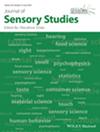The Two-Out-of-Five method is one of the basic sensory discrimination methods. It is a special case of the ‘M+N’ method with M = 3 and N = 2. Three variants of the method are discussed in the paper: specified, unspecified, and unspecified with forgiveness. Analytical and simulation-derived psychometric functions for all three variants of the Two-Out-of-Five method are derived and produced. The performance of the method in both difference and similarity/equivalence tests are explored. It is shown that both difference and similarity/equivalence testing powers for the specified Two-Out-of-Five are larger than those for the 2-AFC and 3-AFC. Both difference and similarity/equivalence testing powers for the unspecified Two-Out-of-Five are larger than those for the Triangle and Duo-trio. Both difference and similarity/equivalence testing powers for the unspecified with forgiveness Two-Out-of-Five are larger than those for the conventional unspecified Two-Out-of-Five and unspecified Tetrads. Tables and R codes are presented and provided for estimations of the probability of correct response, Pc, Thurstonian discriminal distance or d', and the B value for estimating the variance of d' for the three variants of the Two-Out-of-Five method.
The Two-Out-of-Five method is a powerful sensory discrimination method. However, this method has not been used widely in sensory and consumer research, partly since the method has not been explored adequately in the literature. This paper explores the Two-Out-of-Five method and shows that the method has potential for wide application. The Two-Out-of-Five method involves a larger number of samples (5) and sensory fatigue may be of concern. Hence, the method may not be suitable for taste and smell tests with strong stimuli. The method is particularly suitable for manual and visual inspection testing where sensory fatigue is of a lesser concern.


